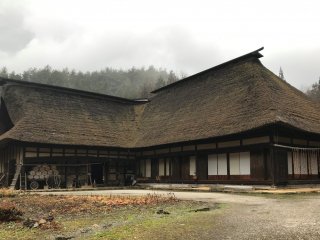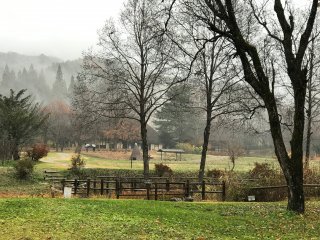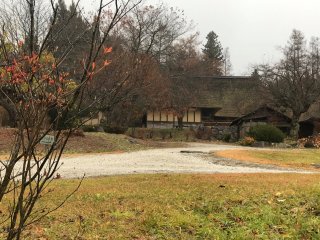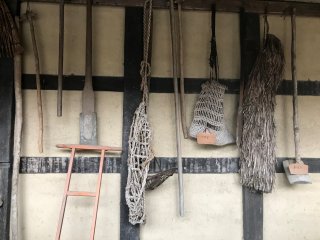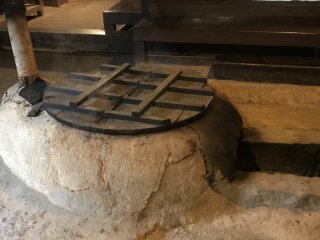If you love old houses like I do, be it machiya townhouses in Kyoto or minka farm houses in the Japanese countryside, then a visit to the Tono Furusato Village is a must.
I had read the book "Tono Monogatari" and I wanted to come to Tono in Iwate Prefecture for a long time to see whether I could still catch a glimpse of the setting and characters described in the folk stories of this book. The stories reminded me of Grimm's Fairytales that I had listened to in my childhood days in Germany.
I came to Tono on a long weekend trip and I wanted to learn about the lifestyle here in the old days. A visit to the Tono Furusato Village was recommended to me and so I went there and was not disappointed.
I could see some of the traditional magariya close-up and even from the inside. Magariya are thatched roof houses built in an L-shape. I had heard about them but could not really imagine how they looked like.

These houses were inhabited by farmers in mountain villages together with their horses. In the harsh winters of Tohoku the animals found shelter under the same roof as their owners. There are a couple of small horses kept now in two of the houses to show you what it must have been like in the old days.
The houses here are from the middle of the Edo period (1603 - 1868) but they have been carefully preserved. Actually, the houses you see were transplanted here from some other locations, and they are now named. For example, the "Kimoiri House" was the house of the village leader and the "Daikudon" was a carpenter's house. In some of these houses, visitors can now enjoy some craft-making experiences, for example, straw craft, woodworking or vegetable dyeing.

To be sure, some of the owners of these houses must have been wealthier than others judging from the interior of the houses. In one of them, you can see a weaving loom in a large room with a lacquer-covered floor. The polished lacquer is so shiny, you feel like sliding across in your socks.

In what seems the kitchen in another house, featuring an earthen floor, I came across this odd-looking large wooden pot and a similar earthen pot, both with lids. I thought these were old-fashioned bathtubs, but not so! Our guide explained that these were large cooking pots for preparing the animal fodder. Who would have thought that but of course nowadays we are so detached from caring for livestock that we don't know how animals were fed in the pre-industrial farming age.

All sorts of farming tools are displayed in front of the houses and in the houses, you can see some household items and daily life items.
For example, a raincoat made of rice straw called mino. Do you wonder whether you could stay dry in one of those? Well, rice straw has water repellent properties! Besides, a straw coat like this is the perfect camouflage in the fields and forests.
The setting of the Tono Furusato resembles that of an almost "real" village complete with a village shrine and surrounded by gardens and ponds, paddy fields, and forest.
I came in autumn and enjoyed the autumn scenery but summer at the Tono Furusato must also be nice.

Walking around, you might miss the "shrine" because it looks more like a wooden shed than the shrine buildings we are used to. Nonetheless, there are some discoveries to be made here!
















